Crash Course: The evolution of typeface style

By now, you’ve got gotten possibly realized that we at 99designs are fully smitten with the alphabet – arguably the longest ongoing graphic design enterprise in human historic previous.
Over the last few weeks, we have gone over main key phrases in typography and explored the historic previous of kind experience. Now with out further delay, let’s dive into in all probability essentially the most fascinating chapter of all: the evolution of typeface mannequin, major correct as a lot as the massive array of fonts we have to pick from now. You might uncover lots of these earlier sorts echoed inside the stylish kind we see as we converse.
1. Blackletter
_

Blackletter is the oldest typeface mannequin that additionally has important echoes in stylish kind. It emerged in Europe inside the middle ages (spherical 1150 AD) and caught spherical correctly into the seventeenth century – significantly in Germany. It is the direct descendent of Carolingian minusculewhich itself obtained right here from Uncial script.
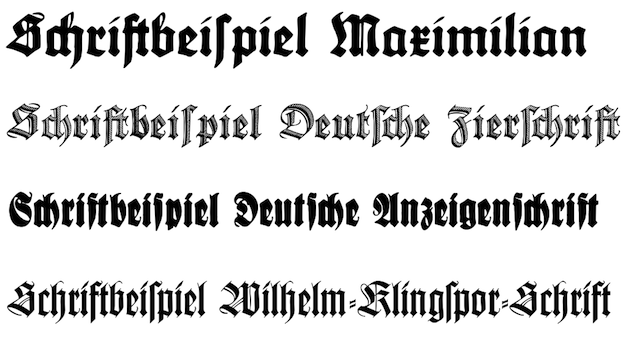
When books grew to turn into further trendy with the rise of universities, scribes wished a further setting pleasant typeface than Carolingian—one factor less complicated to write down down and additional dense, so further kind would possibly match on a single internet web page. The tall, slim, sharp and blocky Blackletter emerged in reply.
Additionally known as: Gothic, Block, Fraktur, Textura, Earlier English
2. Humanist
_
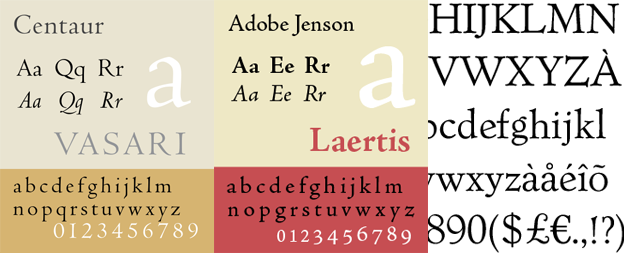
This typeface mannequin emerged spherical 1460 and was primarily based totally on the script mannequin of Italian humanist thinkers. It is quite a bit lighter and fewer blocky than Blackletter, making it masses less complicated to study by as we converse’s necessities.
The median peak of its letters is distinctively low which has prompted it to fall out of recognition as of late.
Additionally known as: Venetian
Examples: Centaur, Adobe Jenson, Verona SB
3. Earlier Style
_
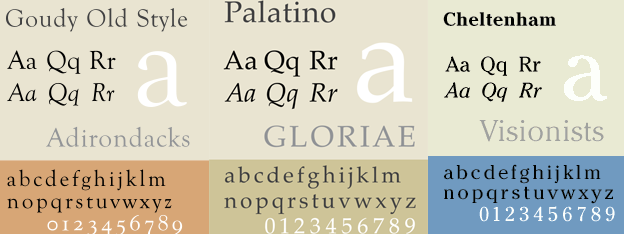
Earlier Style kind was the first mannequin to emerge inside the interval of movable kind letterpress printing (late fifteenth century), pretty than calligraphy and scribes. The outcomes are clear. Additional refined molding experience allowed for higher distinction between thick and thin strokes and additional delicate serif tails.
The horizontal axis turns into further excellent (no further sloped cross-bars on the “e,” as an illustration), whereas italics emerge for the first time. Though its establish could counsel in some other case, most people would uncover Earlier Style the first modern-looking typeface.
Additionally known as: Garalde
Examples: Goudy Earlier Style, Palantino, Cheltenham
4. Transitional
_

This mannequin passed off inside the Enlightenment interval (18th century). It takes Earlier Style a step further, eliminating all remaining traces of handwritten calligraphy in favor of a very mechanical look (the Enlightenment was all about ditching customized and celebrating invention).
Skinny strokes get thinner and thick strokes get thicker; the amount of serif tails will enhance; the vertical and horizontal axes rule — diagonal strokes and leaning attitudes disappear (apart from in italics, in reality).
For a 300 12 months earlier mannequin, we nonetheless use transitional fonts regularly as we converse.
Additionally known as: Neoclassical
Examples: Baskerville, Events New Roman, Georgia
5. Stylish
_
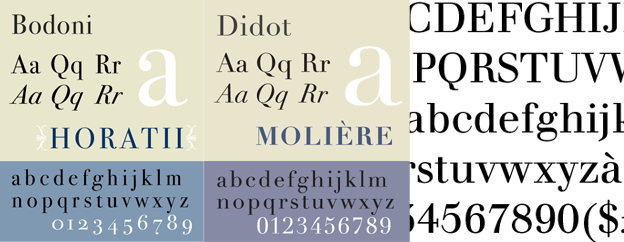
The first Stylish font, by Italian printer Giambattista Bodoni, appeared in 1784 nevertheless the mannequin truly grew to turn into in vogue (and in Vogue) inside the twentieth century. The mannequin takes the stylistic improvement of the Earlier Style and Transitional typefaces to its closing conclusion: great fat thick strokes distinction with hairline skinny strokes with abrupt, correct angle serifs.
Lately, the mannequin exudes luxurious and extreme development.
Additionally known as: Dido
Examples: Bodoni, Didot, Walbaum
6. Slab
_

Up until the nineteenth century, kind was practically always supposed for e-book learning.
Throughout the beginning of the 1800s, though, new makes use of for textual content material grew to turn into trendy: commercials, posters, and large newspaper headlines – points designed to catch your eye.

The Slab serif arrived to fill this need. They’re principally stylish typeface sorts, fattened up with thick, block-like strokes. Most typewriter fonts are moreover slabs.
The typewriter moreover launched monospacing, or forming a typeface throughout which every glyph is the exact same width.
Additionally known as: Egyptian, Sq. Serif, Mechanical
Examples: Clarendon, Rockwell, Playbill, Courier.
7. Sans Serif
_
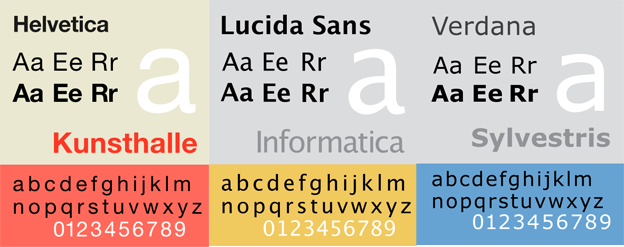
The phrase “sans” in French means “with out.” So there you’ve got gotten it: sans serifs lack these little tabs and tails that, up until the 1830s, have been in apply obligatory. Of us did not adapt to the change merely. Early sans serifs grew to turn into typically referred to as “grotesques” because of people found them so ugly.
After the grotesques, three totally different courses of sans serif emerged:
- Neo-grotesques (aka transitional, realist): Plain and easy to study; the well-known Helvetica is one among these.
- Humanists: Barely further calligraphic; they embody Calibri, Lucida Sans and Verdana.
- Geometrics: Distinctly stylish actually really feel by being primarily based solely on geometric shapes; Futura and Century Gothic are examples.
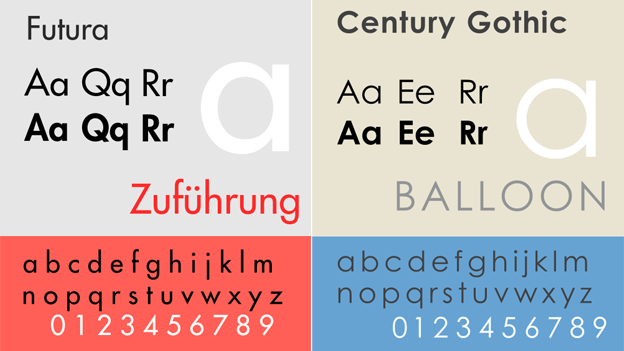
That covers the foremost improvement of typeface mannequin over the centuries. In case you’re pondering “wait, I see a substantial amount of typeface sorts that don’t pretty match into any of those courses,” you’re fully acceptable.
Given that creation of digital experience, the number of typefaces has skyrocketed to include quite a lot of sorts which were beforehand terribly unusual even unparalleled.
Listed under are a handful:
8. Script
_
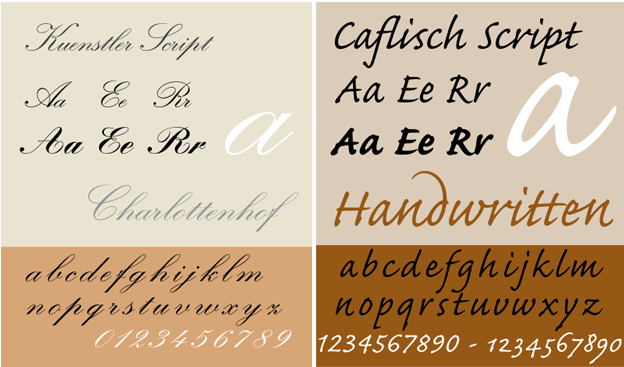
Straight imitates handwriting and calligraphy
9. Mimicry
_

For the roman alphabet nevertheless evokes totally different writing strategies, like Hebrew, for example
10. Ornamental
_

Not in all probability essentially the most readable, this typeface usually consists of objects, animals and totally different thrives
Additionally known as: Novelty
11. Picture
_
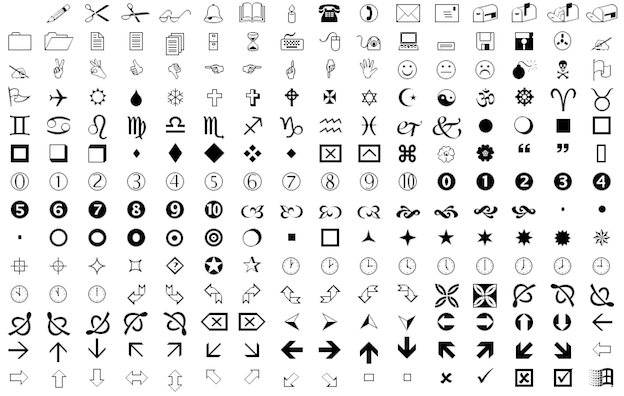
Consists of symbols that won’t resemble common typographic characters the least bit.
Additionally known as: Dingbat
For further data on the evolution of typeface mannequin, do this superior assortment of articles on I Love Typographystarting proper right here.
Featured image: UCDMedicine (via Flickr)





